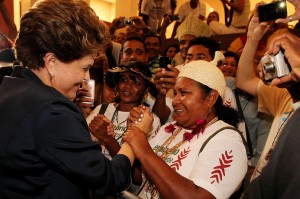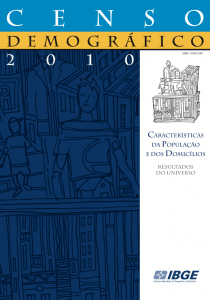Rousseff and 2010 Brazil Census Results
By Ben Tavener, Senior Contributing Reporter
RIO DE JANEIRO, BRAZIL – Brazilian president Dilma Rousseff has said that the face of poverty in Brazil is one that is “black and female,” which highlighted the need to bolster public policies in relation to women’s health in the country and admitted that the country’s black population still experiences unacceptable levels of poverty, violence and unemployment.

While in Salvador, President Dilma Rousseff pledged more help for the region, which has a significantly bigger black population than in the richer southeast region of Brazil, photo by Roberto Stuckert Filho/PR.
She made the comments as she closed the High Level Ibero-American Meeting in commemoration of the International Year of African Descendants, which took place in Salvador, in the northeast of Brazil, where people of African decent make up a greater proportion of the population than in the southeast.
However, she also said that recently the situation had begun to reverse and that the state was now looking out for people from the more disadvantaged communities of the population.
She also noted the success of the “Brazil Without Poverty” program, which aims to bring 16 million Brazilians out of extreme poverty.
The event took part just before National Black Awareness Day on November 20th, which reflects on the injustices of slavery – now coming some 123 years after the official end of the practice in Brazil.
Recent analysis of the results of Brazil’s 2010 census by the IBGE (Brazilian Institute of Geography and Statistics) is starting to reveal some intriguing facts about the changing face of the Brazilian populace.
The census, which is carried out every ten years, showed rising social indicators throughout Brazil as a result of economic growth, but also showed that serious inequalities remain between men and women, and between urban and rural areas, despite improvements over the past ten years.

Brazil’s 2010 census by the IBGE (Brazilian Institute of Geography and Statistics), image by IBGE.
The average monthly salary in rural parts of the country was R$596: less than half the average urban rate of R$1,294. On average, women’s salaries were only 71 percent of those earned by men.
And poorer families are having to split less money between more mouths: the average household has 3.3 residents, whereas those with very low incomes had 4.9 people at home.
More positive was the news that the census had found a major decrease in national illiteracy in the past ten years, down four percent among those aged over fifteen to 9.6 percent, and in the ten to fourteen age range the rate was down from 7.3 to 3.9 percent.
A stark difference between rich and poor and rural and urban areas could again be seen, with the national illiteracy rate at 17.5 percent for those with no or little earnings, in comparison to 0.3 percent of those living on five or more times the minimum wage.
The “face of poverty” that President Rousseff described may remain “black and female,” but the “face of Brazil” is changing. For the first time less than half of Brazil’s 191-million-strong population identified themselves as “white,” now representing 47.7 percent of the population, down from 53.7 percent in 2000.
The black population grew to 7.6 percent, and “mixed race” respondents grew to 43.1 percent – apparently almost as many as considering themselves “white.” Asian and indigenous groups make up smaller percentages of the population.
Brazil’s first national census, which was carried out in 1872, surveyed some 9,930,478 people and has become a once-a-decade event since 1941. The 2010 census surveyed over 190 million people.

No comments:
Post a Comment